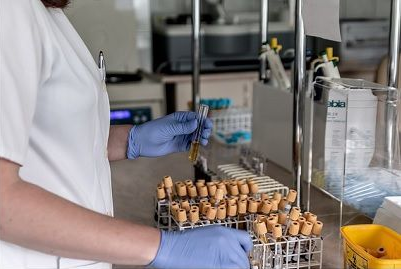Description
Microorganisms are usually killed by heat as a result of the inactivation of their protein including enzymes. The heat is applied in either moist or in dry conditions in processes of sterilization referred to as moist heat and dry heat sterilization.
Dry heat destroys microorganism by oxidizing their proteins and other chemical constituents. When dry proteins are heated, the polar groups in their peptide chains are less active due to absence of water and their motility is also reduced.
Moist heat sterilization in comparison to dry heat sterilization kills microorganism by coagulating their proteins quite rapidly and effectively. When wet proteins are heated they release free-SH groups and give raise to small peptide chains. The chains eventually are motile with capacity to form new bonds between themselves, this result to formation of a different protein structure from the original; this is referred to as denaturation of protein. Below are more details on the differences between moist and dry heat sterilization.
Moist Heat Sterilization
Here is a highlight of details about moist heat sterilization:
- Moist heat sterilization is a procedure in which heated, high-pressure steam is used to sterilize an object, killing any bacteria, viruses or spores that may have contaminated the object.
- Moist heat sterilization technique does not involve any toxic liquids or fumes.
- It is relatively inexpensive, quick and effective in killing and eliminating potentially infectious bacteria, viruses and spores.
- Moist heat sterilization is performed in a piece of equipment known as autoclave, a pressurized chamber in which heated steam is used to sterilize various objects.
- Used in most hospitals to sterilize medical equipments such as surgical scalpels and dental equipments.
- Used to sterilize glassware and most metal instruments.
- Used in culture media, to sterilize flammable and heat-sensitive items.
- Moist heat kills microorganisms by coagulating their protein quite rapidly and effectively.
What Are Some Of The Advantages Of Moist Heat Sterilization?
- Requires low temperature.
- Less time is required to complete sterilization.
- Simple to control and monitor.
- It is a toxic process.
- It is a low cost process.
What Are Some Of The Disadvantages Moist Heat Sterilization?
- The chances are high that instrument can get damaged due to repeated exposure to high temperature.
- Sterilization of heat-sensitive equipment can be done through this process.
- After sterilization the instrument remains wet for a considerable amount of time and this can result to rusting.
Dry Heat Sterilization
Here is a highlight of details about Dry Heat Sterilization:
- Dry heat sterilization is a sterilization technique that uses very high temperatures to kill and eliminate various pathogens from an object or surface.
- In order to kill the most resistant spores, a dry-heat sterilizer must bring its load to 170 degrees Celsius and hold it at that temperature for one hour.
- Dry heat helps to kill the organisms by oxidizing their proteins and other chemical constituents.
- There are two types of dry-heat sterilizers used in dentistry that is static air and forced air types.
- Dry heat is noncorrosive and has low operating costs.
- Dry heat may be used to sterilize patient-care items that might be damaged by moist heat sterilization e.g burs and certain orthodontic instruments.
- Used to
- Used to sterilize glassware, syringe, paper wrapped items and most metal instruments.
- Used to sterilize anhydrous fats, oils, powders and metal at risk of corrosion.
Advantages
- It does not cause metals to corrode or rust.
- A dry heat cabinet is easy to install and has relatively low operating cost.
- It does not release any harmful or hazardous fumes or pollutants.
- It penetrates materials.
- It is safe for environment.
Disadvantages
- It is time consuming because of the slow rate of heat penetration.
- It requires an extremely high temperature to annihilate resistant microbes.
- High temperature exposure may be harmful to the instrument.
Also Read: Difference Between Sterilization And Disinfection
Difference Between Moist Heat Sterilization And Dry Heat Sterilization In Tabular Form
| BASIS OF COMPARISON | DRY HEAT STERILIZATION | MOIST HEAT STERILIZATION |
| Involves | It involves use of dry air of high temperature for considerable long time. | Involves low temperature and high pressure of (Steam). (Requires steam and Water). |
| The process | Sterilization is achieved through oxidation of the protein and other chemical bonds present in microbes. | Sterilization is done by coagulating protein of microbes very effectively. |
| How it is Done | It is done on direct flames. | It is done under high pressure. |
| Similar Processes | Incineration, Bunsen burner flame, hot air oven and microwave fall under category of dry heat sterilization. | Autoclaving and boiling are categories that fall under moist heat sterilization. |
| Time Requirement | The process of dry heat sterilization takes more time when compared to moist heat sterilization. | The process of moist heat sterilization takes less time when compared to dry heat sterilization. |
